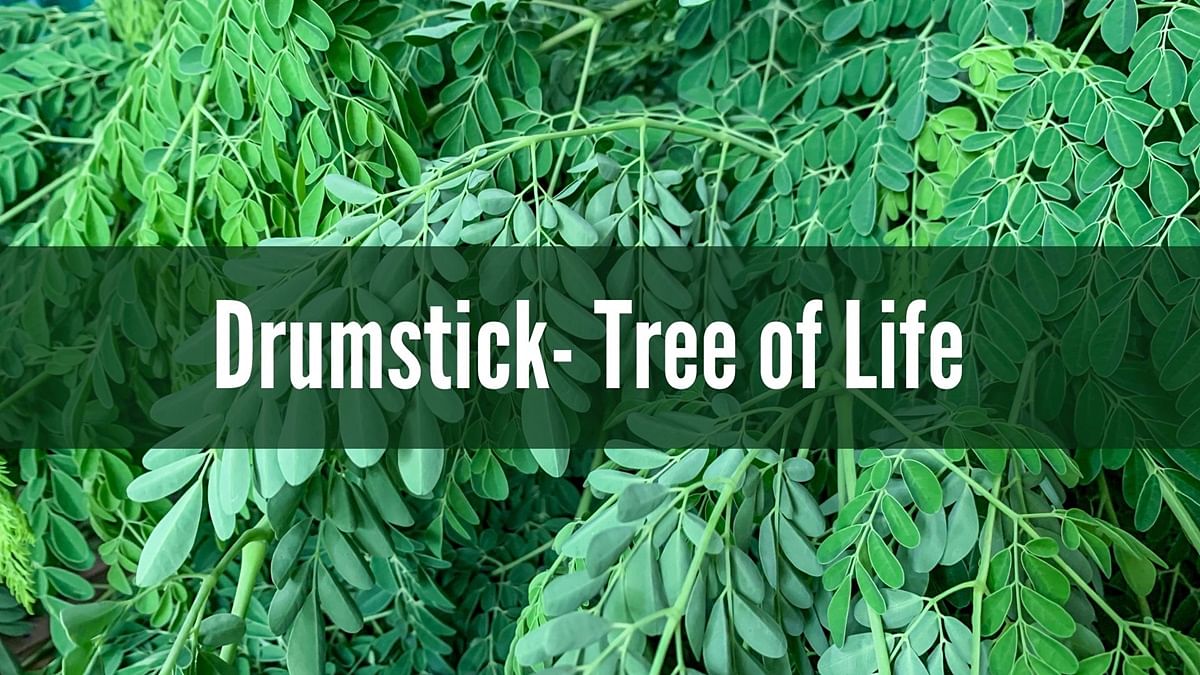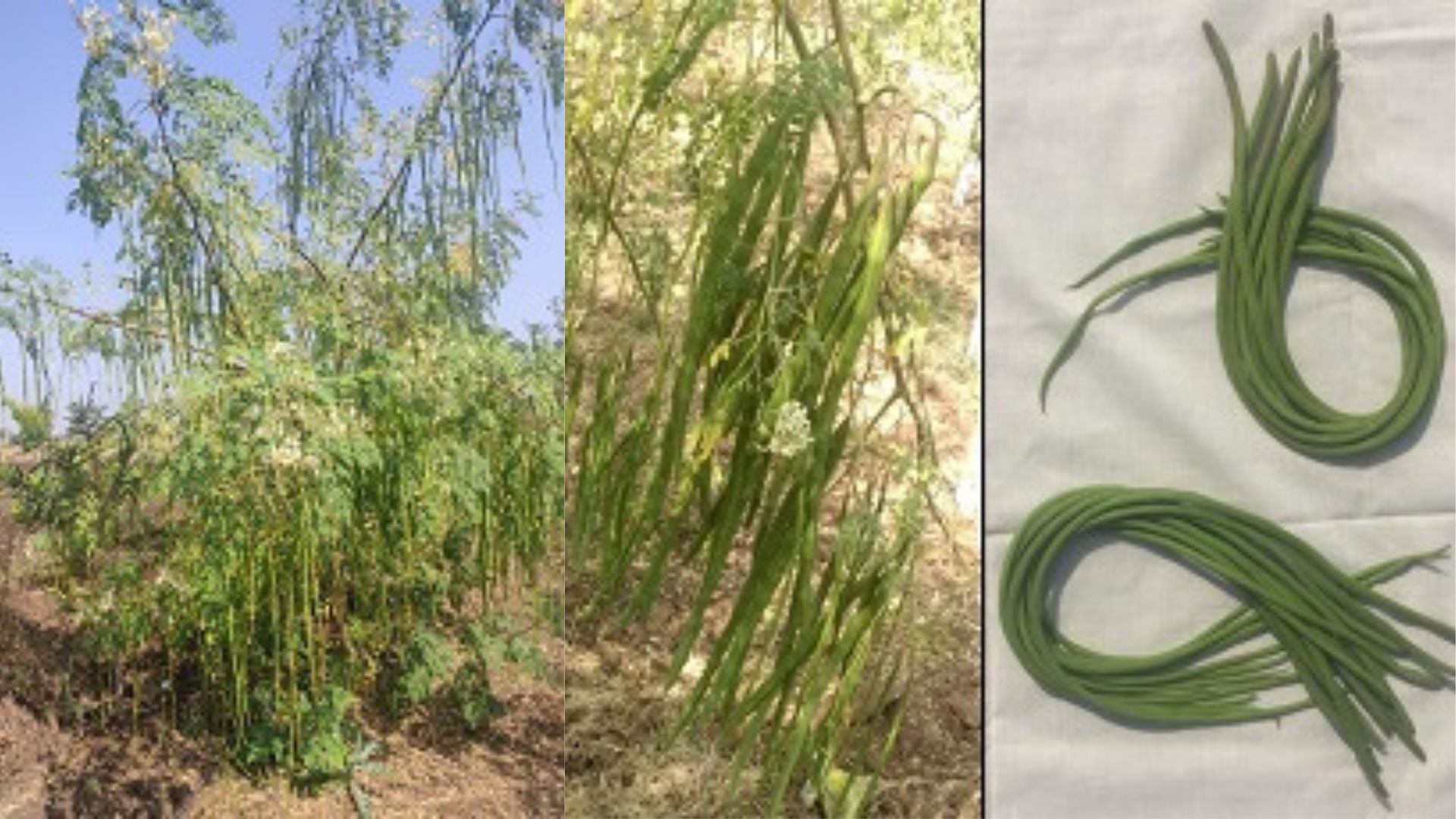
Drumstick, scientifically known as Moringa oleifera Lam, is a botanical marvel often referred to as the "Miracle Tree" or "Tree of Life." Its extraordinary health benefits, nutritional richness, and positive environmental impact have earned it this esteemed reputation. The drumstick tree, which is native to South Africa and Asia, has been valued for thousands of years because to its traditional usage in traditional medicine and as a mainstay in food. This article delves into various aspects of drumstick cultivation, its medicinal properties, nutritional value, environmental implications, and its role in promoting economic stability among farmers.
Traditional Uses and Medicinal Properties
Drumstick holds a significant place in traditional medicine across Asian and South African countries. Various parts of the plant, including leaves, pods, and seeds, have been utilized for their therapeutic properties for centuries. In traditional medicine, drumstick is renowned for treating a numerous of health conditions, including inflammation, infectious diseases, cardiovascular disorders, gastrointestinal ailments, and hepatorenal disorders. Specifically, the leaves have been used to alleviate conjunctivitis and expel intestinal worms, while also being recommended for pregnant and lactating mothers to enhance milk production.
Cultivation and Adaptation
The adaptability of drumstick to diverse climatic and soil conditions has contributed to its widespread cultivation. Indigenous to regions spanning from India to Africa, the drumstick tree thrives in arid and tropical climates, making it a valuable asset for regions facing water scarcity. It exhibits remarkable drought resistance, enabling it to flourish even in dry, nutrient-poor soils. Cultivation of drumstick is feasible on various soil types, with well-drained loamy and sandy soils being particularly conducive to its growth.
Nutritional Value and Versatility
One of the most remarkable attributes of drumstick is its exceptional nutritional profile. All parts of the plant, including leaves, pods, seeds, and flowers, are rich in essential nutrients, vitamins, and minerals. Drumstick leaves, in particular, are packed with vitamins A and C, calcium, iron, protein, and antioxidants. Consuming just 100 grams of fresh drumstick leaves can fulfill a significant portion of daily nutritional requirements, making it an invaluable dietary supplement, especially in regions where access to diverse food sources is limited. Additionally, drumstick's versatility extends beyond its nutritional value, with various parts of the plant being utilized in diverse industries, including paper production, water clarification, and bio-lubricant manufacturing.
Environmental and Economic Impact
The cultivation of drumstick offers not only nutritional benefits but also significant environmental advantages. Its deep root system helps prevent soil erosion and improve soil fertility, while its rapid growth rate facilitates carbon sequestration, contributing to climate change mitigation efforts. Furthermore, drumstick cultivation promotes biodiversity by providing habitat and sustenance for various beneficial organisms. From an economic perspective, drumstick cultivation presents lucrative opportunities for farmers, particularly in drought-prone regions. The commercialization of high-yielding drumstick varieties has enhanced farmers' income and livelihoods, thereby fostering economic stability in rural communities.

Drumstick Varieties and Cultivation Challenges
Despite its numerous benefits, drumstick cultivation is not without its challenges. Variability in climate and soil conditions can impact yield and quality, necessitating the development of high-yielding cultivars adapted to specific environmental conditions. Additionally, pests and diseases pose significant threats to drumstick crops, requiring effective management strategies to ensure optimal productivity. Research and breeding programs aimed at developing resilient drumstick varieties are essential for addressing these challenges and sustaining production in the face of evolving environmental pressures.
ICAR-CHES High-Yielding Varieties: Thar Harsha and Thar Tejas
The development of high-yielding drumstick varieties such as Thar Harsha and Thar Tejas represents a significant breakthrough in agricultural research. These drumstick varieties were developed through a meticulous process of single plant selection at the ICAR-Central Horticultural Experiment Station (CHES) in Godhra, Gujarat. They were then carefully evaluated under rainfed semi-arid conditions to ensure their suitability and adaptability to the local environment.
These varieties, bred for their adaptability to rainfed semi-arid conditions, exhibit superior yield potential and nutritional quality compared to traditional cultivars. Thar Harsha, characterized by dense foliage and late fruiting, has emerged as a game-changer for farmers, significantly enhancing nutritional security and income generation in regions across India.
Impact of Thar Harsha Variety on Farmers' Nutritional Security
The widespread adoption of Thar Harsha variety has had a transformative impact on farmers' livelihoods and nutritional security. Its commercial cultivation has enabled farmers to diversify their income sources while also providing a sustainable solution to combat malnutrition and food insecurity. Moreover, initiatives promoting kitchen garden cultivation of Thar Harsha have empowered tribal farmers and marginalized communities, thereby contributing to inclusive development and poverty alleviation.
Promoting Organic Drumstick Cultivation
Organic drumstick cultivation is gaining traction as consumers increasingly prioritize health and environmental sustainability. The transition to organic farming practices not only eliminates the use of synthetic pesticides and fertilizers but also enhances soil health and biodiversity. By promoting organic drumstick cultivation, agricultural stakeholders can capitalize on growing market demand for premium-quality, sustainably produced food products while also safeguarding environmental resources for future generations.
The drumstick plant, with its countless benefits and wide-ranging applications, serves as an opportunity for sustainable agriculture and overall well-being. From its traditional uses in medicine to its modern applications in nutrition and environmental conservation, drumstick continues to captivate the imagination of researchers, farmers, and consumers alike. As we look to the future, investments in research, innovation, and capacity-building are crucial for unlocking the full potential of drumstick cultivation and harnessing its transformative power to create a healthier, more prosperous world for all.










